Brackets for acoustics: characteristics and installation rules

Acoustic systems are a complex technique that requires not only correct selection and operation, but also installation. Installation of acoustics can rarely do without the use of special devices - brackets. You need to know how to choose and install these mounts, otherwise the acoustics efficiency will be reduced and there will be a possibility of damage to it.
Device and equipment
The brackets are cantilever supports that can be mounted to a wall or ceiling. Such speaker mounts have earned their popularity due to the saving of free space, simple installation, laconic appearance and ease of control of the speakers. Speaker mounts are made from different materials (steel, aluminum, plastic, wood). Manufacturers often combine these materials to enhance the performance of their products. Also, brackets differ in design, type of attachment, maximum weight that they can withstand, and other characteristics.
The complete set of all brackets may also be different. At this point, you must definitely pay attention when choosing.
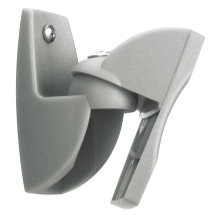
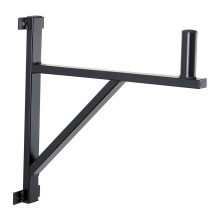
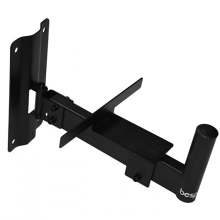
The standard set of brackets for acoustics consists of the following elements:
bracket;
fasteners for fixing the structure on the surface;
bolts for installing speakers;
instructions for installation and use.
Not every bracket model is equipped with this configuration. When buying, you need to check the presence of all the necessary elements for installation. If you find them missing, you will have to buy it yourself. This is usually the "sin" of inexpensive Chinese brackets.
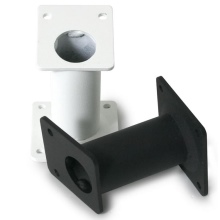
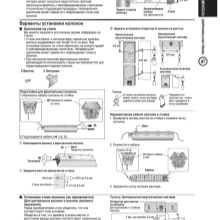
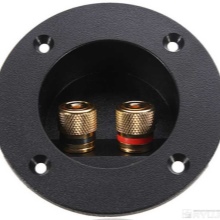
Views
The most popular are wall brackets for audio speakers, because this is the location that is most relevant. Ceiling mounting is less commonly used. Brackets are needed for any of these cases. They are divided into 4 main categories, this classification is based on design features.
The simplest mounts, precisely because of their minimalism and the absence of everything superfluous in the design, bribe many users. Their advantages do not end there. Despite the outward simplicity, the reliability of the structures is at a high level. The absence of tilting and pivoting mechanisms increases the performance of the fasteners and reduces the likelihood of their breakage. Simple installation, the essence of which is screwing in self-tapping screws or driving nails into the wall / ceiling and fixing the brackets on them.
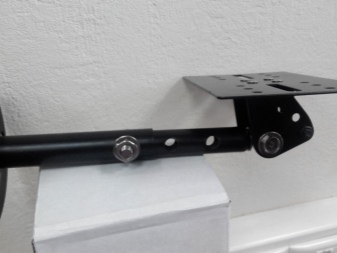

There are also enough disadvantages here:
no turning;
incompatibility with some acoustics models.
The universal brackets work equally well for large and small speakers, a microphone or even a flower pot. They can be used not only with speakers of different sizes and weight, but also for other purposes. The structure consists of a movable base and a metal plate. With sufficient maneuverability, the reliability of such mounts is at a high level.
The position of the speakers with universal brackets can be changed easily and conveniently at the user's request.

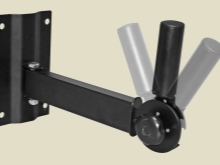
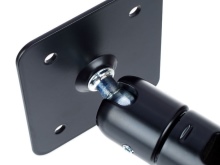
Swivel designs are among the most comfortable to use. The user can change the angle of inclination and rotation of the acoustics with virtually no restrictions. Aluminum and plastic are commonly used to create swivel brackets, steel structures are rare.It makes sense to buy swivel mounts made of steel for installation on the wall of large systems with impressive weight. The weak point in such designs is the rotary mechanisms, which cannot be repaired.
The hinge brackets are superior in ease of use to all the options described above. They are characterized by their small size and large angle of rotation, while allowing you to install almost any acoustics: from small speakers to serious audio systems.
Installation does not involve any particular difficulties, the main thing is to strictly adhere to the installation instructions.
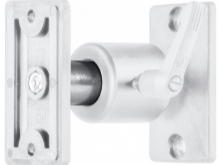
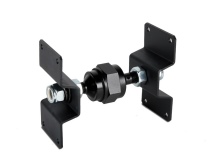
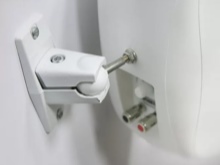
Selection Tips
So that buying a bracket does not become a disappointment and waste, you need to remember some rules and tips for choosing. They will help in making the right choice.
The mount must withstand not only the weight of the acoustics, but also the vibrations that occur when listening to music. Accordingly, a good bracket should not only be rigidly attached to the speakers, but also be able to be securely attached to a surface (wall / ceiling).
The possibilities of adjusting the tilt and angle of rotation turn out to be very useful and convenient in practice. If the direction of acoustics and the propagation of sound waves are important to the user, then brackets with a pivot function should be chosen.
Some mounts require the speakers to be secured by drilling holes in them, which is undesirable. It is better to choose models, the design of which provides for the clamping of acoustics. In this case, the body remains intact, and the columns are securely fixed.
The cable channel allows you to hide the speaker wires inside the mount. With such a bracket, the appearance of the structures is more pleasant and neat.
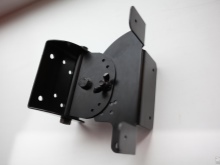
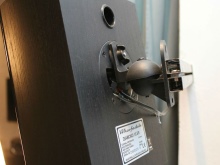
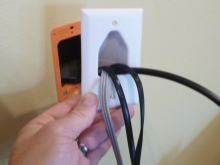
Installation
Mounting brackets for acoustics is a simple process that everyone can handle. There is no need to contact a master. It will be enough to adhere to the practical guide to get a decent result.
We decide on the installation site. In this matter, the installation scheme helps well, in which the direction of sound waves and obstacles that will stand in its way will be taken into account. Such calculations will help to achieve the optimal sound of the acoustics.
The brackets need to be prepared for further installation. The protective film is removed from them and the presence of holes on the base is checked. In some models, you have to do them yourself with a drill.
Holes for anchor bolts are drilled in the wall with the same drill. Screws can also be used, but this option is not as reliable.
We fasten the brackets and install the speakers on them. For this, the mounts can be equipped with clamps or provide for drilling holes in the acoustics housing. For the second option, you will need bolts, which are not always available with the brackets.
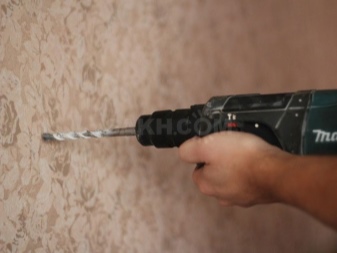
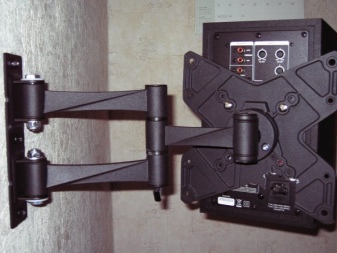
An overview of the bracket for acoustics, see below.













The comment was sent successfully.